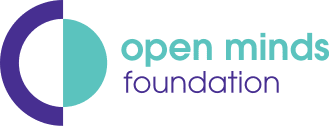How we consume and read content has changed, in large part because the way that content is distributed has changed. Historically, printed media such as books and newspapers cost a premium to produce, distribute and then consume, meaning the content had to deliver value, with a focus on communication and not entertainment. The digital revolution has changed all that, removing the barriers to publishing, and enabling writers a lot more freedom of expression, as well as changing the distribution and consumption of content. This is not inherently bad, but it has facilitated the rise in misinformation and its ensuing problems.
Our education system, particularly in the early years, typically focusses on vertical reading – the consumption of one or two individual sources, applying a traditional, sequential process to gaining understanding. The goal of vertical thinking is to gather the key points in order to understand the main idea or concept that is being conveyed. There is value in vertical thinking in that it enables the reader to sift through content and identify the key points, as well as make quick assessments. It is also a straightforward approach to learning, which allows educators to focus on content and not context, for example in the learning of facts. Used in isolation however, vertical reading leaves room for misinformation, considering the content of the article, but not its credibility. It enables a single source to gain more credibility than it potentially merits, and does not encourage the reader to consider the bias of the author, the content, or their own bias when consuming information – a lot more dangerous in the face of misinformation.

Lateral reading presents an alternative, but it is an underutilized skill that is often not employed until college or University education, and is a skill that many adults may never employ. The purpose of lateral reading is the pursuit of a deeper level of understanding, focussing on deep thought and an interest in the bigger picture. It requires an open, expansive mindset, with a focus on comprehension. Interestingly, it does not require a greater investment of time, but does require a greater selection of sources and an evaluation of source credibility.
A 2017 study published by Stanford found that people typically fall into two groups – vertical thinkers, and lateral thinkers or “fact checkers”. As stated “Historians and students often fell victim to easily manipulated features of websites, such as official-looking logos and domain names. They read vertically, staying within a website to evaluate its reliability. In contrast, fact checkers read laterally, leaving a site after a quick scan and opening up new browser tabs in order to judge the credibility of the original site. Compared to the other groups, fact checkers arrived at more warranted conclusions in a fraction of the time.”

Ultimately, the purpose of lateral reading is still to ascertain the key points, but to read across different texts in order to evaluate the credibility of what you are reading and the ‘facts’ you are comprehending. Our blog on the “rule of five” puts the process of lateral thinking into a simple technique that can get you practising your critical thinking skills. The focus is on deliberately and consciously seeking out conflicting sources, in order to test your assumptions, overcome your own confirmation bias, and prevent the influence of groupthink. It also has the added advantage of diversifying your digital behaviours and footprint, thereby expanding the range of content provided to you by search engine algorithms.
Other ways you can employ lateral thinking are to:
- Go ”upstream”: whenever you are reading materials and you come across a ‘fact’ such as a statistic or quote for example, stop your reading and pursue its original source. Content can be manipulated to suit the context of what you are reading at the time, but that is not necessarily the understanding that was intended by the original source. As we explored in our series on statistics (see That statistic: is it true? and The problem with statistics), the same information or ‘facts’ can entirely change meaning, depending on the way in which the information is presented, and the purpose for which it is used. Finding the original source gives you access to a broader range of information, in addition to the context, enabling you to gain a better, deeper understanding.
- Consider the credibility: most articles should have readily-available information that supports you to evaluate its credibility, but many of us choose to skip past it. Questions you can ask yourself are:
- Who funds the site that an article is published to?
- What is the political leaning of that site and its content?
- Who is the author? Are they credible? Have any of their previous articles been debunked?
- Has anyone fact checked the article? There are many fact checking agencies around, whose specific aim is to check the credibility of major articles and publishers.
- Does the article align with or object to the original content that they are referencing, and are they transparent about it?
- Specifically leave the site: as advised by the Web Literacy for Student Fact-Checkers when it comes to credibility checking, “most people go about this the wrong way. When confronted with a new site, they poke around the site and try to find out what the site says about itself by going to the “about page,” clicking around in onsite author biographies, or scrolling up and down the page. This is a faulty strategy for two reasons. First, if the site is untrustworthy, then what the site says about itself is most likely untrustworthy, as well. And, even if the site is generally trustworthy, it is inclined to paint the most favorable picture of its expertise and credibility possible.” Instead, focus on reading laterally, and specifically explore the credibility of the content and the source, outside of that content or source.
- Circle back: interestingly, we are typically extremely linear in our pursuit of understanding, so even practised critical thinkers will typically pursue a single line of enquiry, moving from source to source to source in a linear pattern. While lateral thinking is inherently about testing and validating knowledge, it is also important to evaluate the context of your original source. An underutilized skill therefore is to “circle back”, reconsidering the original source, article, or post, within the context of what you now know. This is an essential step in assuring that you are honing your skills in reading between the lines, and improves your ability to skim and rationalize quickly without error.
The purpose of all these strategies is ultimately to sharpen your critical thinking skills, and to support you in evaluating what you read, as you read it, also known as ‘active sense-making’. Through this, you develop a natural ability to source from multiple places, and quickly rationalize those sources, seeing the bigger picture, and understanding text in context. The outcome: reduced susceptibility to misinformation, which can’t be a bad thing.

